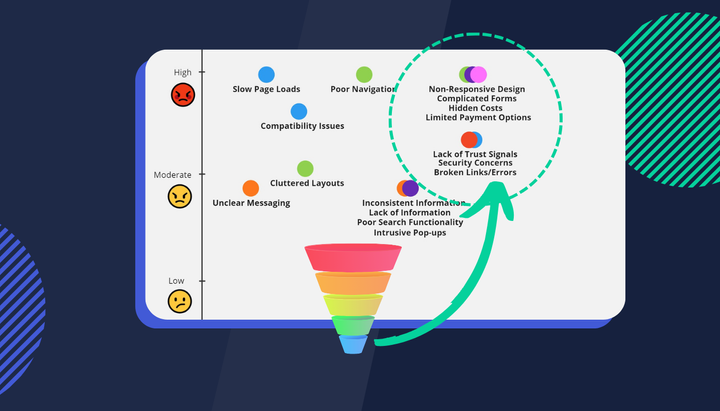The Checkout Experience Gap: How eCommerce Sales and Loyalty Suffer in 2023
70% of eCommerce shoppers will reach the checkout stage but ultimately abandon their purchase. This significant gap between reaching the checkout and completing the transaction is having a detrimental impact on eCommerce sales, customer loyalty, and repeat purchases.

In the fast-paced world of eCommerce, the checkout process holds immense importance. However, recent research from Baymard reveals a startling statistic: 7 out of 10 shoppers in 2023 will reach the checkout stage but ultimately abandon their purchase. This significant gap between reaching the checkout and completing the transaction is having a detrimental impact on eCommerce sales, customer loyalty, and repeat purchases.
The Checkout Bottleneck: Falling Short of Customer Expectations
The checkout process represents a crucial moment in the customer journey. It is the culmination of their decision-making process and the final step before converting from a potential buyer to a satisfied customer. However, the reality is that many eCommerce businesses are falling short of meeting customer expectations at this pivotal stage.
According to Baymard's research, a staggering 70% of shoppers in 2023 will abandon their purchases at the checkout. While not every abandoned cart represents a lost sale with genuine buying intent, it is evident that there is significant room for improvement. Optimising the checkout experience becomes a paramount concern for businesses seeking to capture missed opportunities and boost their bottom line.
The High Cost of Cart Abandonment
The impact of cart abandonment is not limited to missed sales alone. Online retailers worldwide are projected to suffer a massive loss of $4.6 trillion due to this phenomenon in 2023. This staggering figure should be a wake-up call for eCommerce brands, as it highlights the potential revenue that slips through their fingers due to suboptimal checkout experiences.
10 key stats highlighting lost revenue opportunities from poor eCommerce checkout experience
- Online retailers worldwide are predicted to lose $4.6 trillion due to cart abandonment alone. (Baymard)
- In 2023, 7 in 10 shoppers will reach the checkout but not complete the purchase. (Baymard)
- The average cart abandonment rate across industries is approximately 70%. (Baymard)
- The average value of abandoned carts is estimated to be $260. (Barilliance)
- Slow website loading times during the checkout process can lead to a 7% loss in conversions for every second of delay. (Akamai)
- Extra fees and unexpected costs at checkout result in 60% of shoppers abandoning their carts. (Baymard)
- A complicated or lengthy checkout process causes 27% of shoppers to abandon their carts. (Baymard)
- Requiring account creation before checkout leads to 34% of shoppers abandoning their carts. (Baymard)
- Limited payment options contribute to cart abandonment, with 8% of shoppers abandoning their carts due to a lack of preferred payment methods. (Baymard)
- Inefficient or unclear error handling during the checkout process leads to 17% of shoppers abandoning their carts. (Baymard)
Closing the Gap: Optimising the Checkout Experience
To reverse the trend of cart abandonment and regain lost revenue, eCommerce businesses must prioritize optimising the checkout experience. Understanding customer pain points and addressing them effectively can bridge the gap and encourage shoppers to complete their purchases.
Key areas to focus on include streamlining the checkout process, minimising steps, and ensuring clarity in instructions and form fields. Offering guest checkout options and simplifying account creation can remove friction and reduce abandonment rates could also be valid. Additionally, providing multiple secure payment options and prominently displaying trust signals can instil confidence in customers.
A few more ways to turn the ship around could be investing in robust technology solutions that enable real-time cart recovery and personalised email campaigns can also help recapture lost sales.
By leveraging data analytics and customer insights, businesses can tailor their approach to re-engage potential buyers and entice them back to complete their transactions. Ultimately however you'll need to find a solution or mix of solutions that work best for your unique website and your unique visitors. This is where Experience Analytics tools can help.



